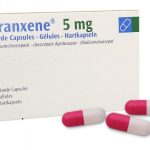Contents
cocaine
Cocaine constricts blood vessels locally and is sometimes used off-label to temporarily stop nasal bleeding before cauterization or packing. Other than its approved clinical use, cocaine is illegally abused and misused due to its effects on the central nervous system (CNS).
Cocaine produces anesthesia by blocking nerve fiber conduction. It blocks sodium channels in neurons, preventing sodium influx and action potential generation. It also increases norepinephrine levels by preventing its uptake by nerve terminals, causing vasoconstriction of blood vessels.
Systemic absorption of topical cocaine affects the cardiovascular system by increasing heart rate, force of contraction, and blood pressure. CNS stimulation elevates dopamine, serotonin, and norepinephrine levels, leading to euphoria and addiction potential. The duration of cocaine’s topical anesthetic effect depends on the drug’s concentration, dosage, and mucosal integrity of the patient, lasting up to an hour. Systemic effects are determined by the extent of absorption.
Warnings
- Avoid topical cocaine use in hypersensitive patients.
- Implement effective accounting procedures and routine protocols for handling controlled substances to minimize the risks associated with CNS stimulant abuse and diversion for illegal nonmedical use.
- Monitor vital signs in patients due to cocaine’s effect on increasing heart rate and blood pressure.
- Avoid using cocaine in patients with a history of cardiac conditions including heart attack, coronary artery disease, congestive heart failure, abnormal ECG, irregular heart rhythm, or uncontrolled hypertension. Also, avoid use in combination with CNS stimulants, vasoconstricting agents, drugs that increase dopamine, serotonin, and norepinephrine levels, and tricyclic and monoamine oxidase inhibitor (MAOI) antidepressants.
QUESTION
What are the side effects of cocaine?
Common side effects of systemically absorbed cocaine include high blood pressure, rapid heart rate, sinus tachycardia, slow heart rate, and ECG abnormalities such as prolonged QT interval or QRS duration.
Call your doctor immediately if you experience any of the following symptoms or serious side effects:
- Serious heart symptoms like fast or pounding heartbeats, fluttering in your chest, shortness of breath, and sudden dizziness.
- Severe headache, confusion, slurred speech, severe weakness, vomiting, loss of coordination, or feeling unsteady.
- Severe nervous system reaction characterized by very stiff muscles, high fever, sweating, confusion, fast or uneven heartbeats, tremors, and feeling like you might pass out.
- Serious eye symptoms such as blurred vision, tunnel vision, eye pain or swelling, or seeing halos around lights.
This is not a complete list of side effects or adverse reactions that can occur. Contact your doctor for medical advice or report side effects or health problems to the FDA at 1-800-FDA-1088.
What are the dosages of cocaine?
Adult:
Topical Solution: Schedule II
- 4% (40 mg/mL)
- 10% (100 mg/mL)
Intranasal Solution: Schedule II
- 4% (Goprelto, Numbrino)
Nasal Cavity Anesthesia
Numbrino or Goprelto
- Indicated for local anesthesia of the mucous membranes during diagnostic procedures and surgeries on or through the nasal cavities in adults
- Dose ranges from 40-160 mg, depending on nasal mucosal area and procedure
- Up to 2 soaked cotton or rayon pledgets may be used in each nasal cavity, not exceeding a total dose of 160 mg (4% solution)
- Maximum dose not to exceed 3 mg/kg for any procedure or surgery
Mucous Membrane Anesthesia
- Indicated for local anesthesia of accessible mucous membranes of the oral, nasal, and laryngeal cavities
- Use lowest effective dose with 1-10% solution
- Do not exceed 3 mg/kg or 300 mg
Dosage Modifications
- Insufficient data available for dosing guidance
- Avoid use in patients with hepatic impairment since cocaine is eliminated primarily by metabolism
- Primarily metabolized with little unchanged drug excreted in urine
- Dosing not studied; titrate dose conservatively
Dosing Considerations
- Dosage varies depending on tissue vascularity, anesthetic technique, and patient tolerance
- Reduce dose for elderly or debilitated patients
Pediatric:
Topical Solution: Schedule II
Mucous Membrane Anesthesia
- Indicated for local anesthesia of accessible mucous membranes of the oral, nasal, and laryngeal cavities
- Use lowest possible effective dose; solutions stronger than 4% not recommended due to increased toxicity risk
Dosing Considerations
- Dosage variables include tissue vascularity, anesthetic technique, and patient tolerance
Addiction/overdose
- No reports of overdose from topical cocaine used for anesthesia in clinical settings
- However, cocaine is a highly addictive substance, and misuse/abuse can lead to dependence, addiction, overdose, convulsions, unconsciousness, coma, and death
- Treatment for cocaine overdose involves symptomatic and supportive care
What drugs interact with cocaine?
Inform your doctor of all medications you are currently taking to identify any potential drug interactions. Never start, stop, or change the dosage of any medication without your doctor’s recommendation.
- Severe Interactions: eliglustat, iobenguane I 123
- Other Interactions: abametapir, apalutamide, bupivacaine implant, citalopram, desvenlafaxine, fexinidazole, idelalisib, iobenguane I 131, isocarboxazid, linezolid, lonafarnib, lorcaserin, methylene blue, metoclopramide intranasal, phenelzine, procarbazine, pseudoephedrine, tranylcypromine, tucatinib, vilazodone, vortioxetine, voxelotor
The above drug interactions are not exhaustive. For more information, visit the RxList Drug Interaction Checker.
Always inform your doctor, pharmacist, or healthcare provider of all prescription and over-the-counter medications you use, including dosage, and keep a list of this information. Contact your doctor or healthcare provider if you have any questions about your medication.
Pregnancy and breastfeeding
- Topical cocaine may harm the fetus, so do not use in pregnant women.
- Cocaine is present in breast milk, so breastfeeding should be avoided during treatment. Pump and discard breast milk for 48 hours after using topical cocaine.
What else should I know about cocaine?
- Cocaine is a Schedule II controlled substance, and diversion is a criminal offense.
- Do not misuse or abuse cocaine for nonmedical purposes, as it can lead to addiction, dependence, overdose, and fatal consequences.
- In case of overdose, seek immediate medical help or call Poison Control.
- If you are pregnant or suspect pregnancy, inform your doctor before ENT procedures that may require the use of cocaine as a topical anesthetic.
- Cocaine can increase heart rate and blood pressure. If these symptoms persist, notify your healthcare provider.
- Seek immediate medical help if you experience any hypersensitivity reactions.
By clicking Submit, I agree to the MedicineNet’s Terms & Conditions & Privacy Policy and understand that I may opt out of MedicineNet’s subscriptions at any time.
Summary
Cocaine is a topical ester anesthetic used to numb the mucous membranes of the oral, nasal, and laryngeal cavities during procedures or surgeries involving the nasal cavities. Systemic absorption of cocaine can cause high blood pressure, rapid heart rate, slow heart rate, ECG abnormalities, irregular heart rhythm, and other side effects. Misuse/abuse of cocaine can lead to addiction, dependence, overdose, convulsions, unconsciousness, coma, and death.
Cocaine is a topical ester anesthetic used to numb the mucous membranes of the oral, nasal, and laryngeal cavities during procedures or surgeries involving the nasal cavities. Systemic absorption of cocaine can cause high blood pressure, rapid heart rate, slow heart rate, ECG abnormalities, irregular heart rhythm, and other side effects. Misuse/abuse of cocaine can lead to addiction, dependence, overdose, convulsions, unconsciousness, coma, and death.


